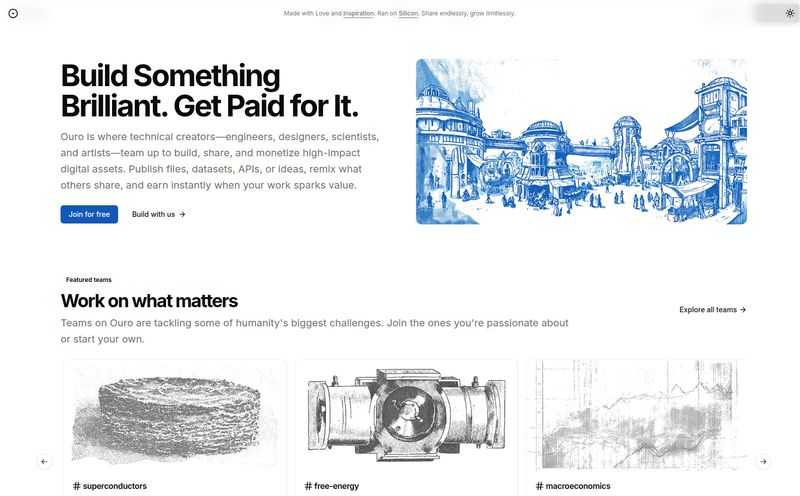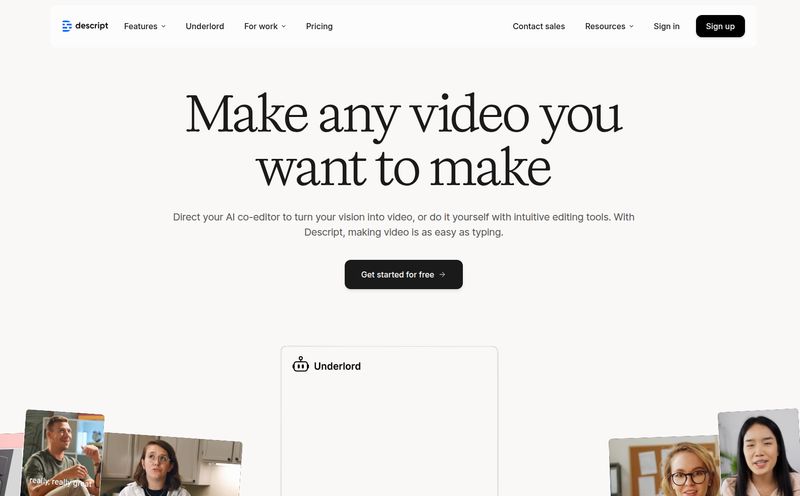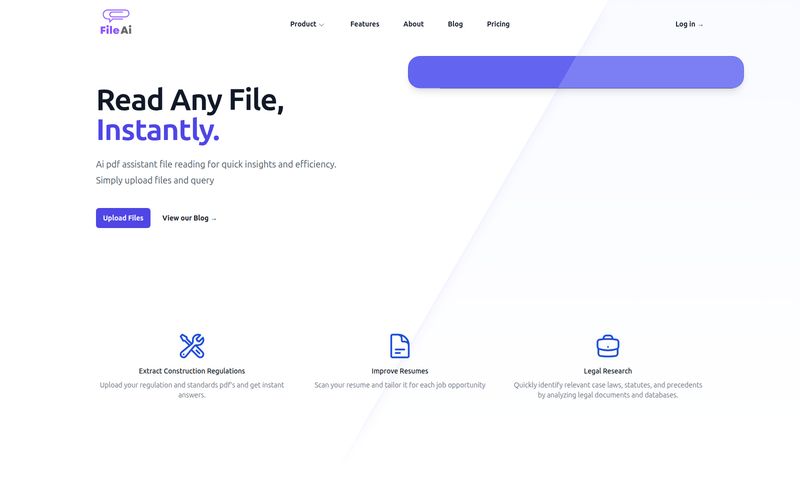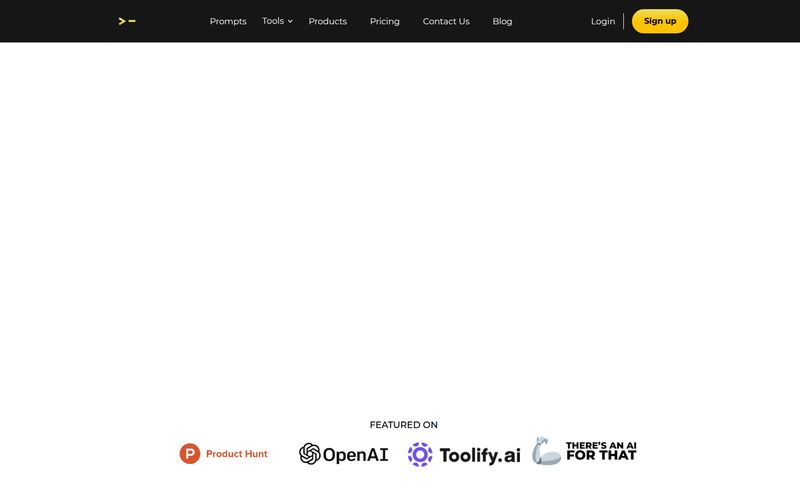Ever feel like you’re in a hamster wheel on LinkedIn? You know the drill. Post content, engage with others, reply to comments, comment on their posts… rinse and repeat. It’s a full-time job on top of your actual full-time job. For a while there, a whole wave of AI tools popped up promising to be our little digital assistants, our ghostwriters for the grind. And one of them, a neat little tool called Tappy AI, caught the eye of many.
Well, I say “caught” in the past tense for a reason. If you head over to their site now, you’re not greeted with a fancy sales page or a user dashboard. You’re greeted with a simple, stark message: “Tappy has been sunset.”
It’s a story I’ve seen play out a dozen times in the last couple of years, especially in the AI space. A flash of brilliance, a flurry of interest, and then… radio silence. So let’s do a little post-mortem, shall we? Let’s talk about what Tappy was, the problem it tried to solve, and what its departure says about the wild west of AI-powered productivity tools.
So, What Was Tappy AI Anyway?
At its heart, Tappy was a specialized AI assistant built for one thing and one thing only: helping you write comments on LinkedIn. Think of it as a little muse sitting on your shoulder. You’d be scrolling your feed, see a post from a connection, and instead of staring blankly at the comment box, Tappy would offer a little nudge. It would generate thoughtful, relevant comments with a single tap, saving you the mental energy of coming up with something original every single time.
I’ll admit, the promise was alluring. We all know that meaningful engagement is the secret sauce to LinkedIn's algorithm. It’s not just about liking a post; it's about adding to the conversation. But creativity isn't a tap you can just turn on and off. Some days, you've got nothing. Tappy aimed to be the solution for those “nothing” days.

Visit Tappy
The Seductive Promise of Effortless Engagement
Why did a tool like this even exist? Because the pressure to be “always on” is immense. As an SEO guy, I’m constantly telling people about the importance of consistent traffic and engagement signals. On platforms like LinkedIn, that translates directly to visibility. The more you meaningfully interact, the more the platform shows your profile and content to others. It’s a simple feedback loop.
Tappy leaned right into this pain point. Their model was pretty straightforward, as I recall. They had a free plan that gave you 5 free comments each day. Just enough to give you a taste. Just enough to get you hooked on the convenience. For the hyper-networker or the social media manager handling multiple accounts, this could feel like a godsend. It was a shortcut through the relentless churn of social media maintenance.
But let's be honest, there's always been a debate around this kind of tool. Some might argue it cheapens the interaction. Is a comment really “thoughtful” if an AI wrote it? It’s a valid point. In my experience, though, these tools are best used as thought-starters, not as complete replacements for human interaction. A way to break through writer's block. Its a fine line to walk.
The Inevitable Sunset: Why Tappy Closed Its Doors
So, what happened? The website is pretty light on details, simply stating it was an experiment in “new ways to use AI around the internet.” And that, right there, is probably the biggest clue. Tappy was likely a victim of what I call the “AI Feature-Tool phenomenon.”
Here’s my take, based on seeing this pattern before:
- The Gold Rush Mentality: When generative AI exploded, thousands of developers rushed to build wrappers around APIs like OpenAI's. They'd find a single, niche problem—like writing LinkedIn comments—and build a tool for it. Fast to market, easy to build.
- The Monetization Hurdle: The problem is, how do you build a sustainable business on a single feature? Especially when your free tier (5 comments a day) might have been generous enough for most casual users. Convincing people to pay a monthly subscription for something they could do themselves is a tough sell.
- The Competition Hydra: For every Tappy, ten other tools pop up that do the same thing, plus five other things. Larger, more established platforms like Jasper or Copy.ai quickly integrate similar features into their existing suites, making a standalone tool feel redundant. You're not just competing with other comment-generators; you're competing with everyone.
- Platform Risk: Building your entire business on another company's platform (in this case, LinkedIn) is notoriously risky. One little change to LinkedIn’s terms of service or API could render your tool useless overnight. It's building a house on rented land.
Tappy was a cool experiment. But in a rapidly maturing market, cool experiments often have a short shelf life unless they can evolve into a full-fledged, indispensable product.
A Quick and Important Note on Data Privacy
I have to give credit where it's due. In their farewell message, the Tappy team made a point to state: “We never stored any of your data or content, so no need to request content deletion. We are deleting account/license key/payment information now.”
This is a class act. In an age of data breaches and shady privacy policies, seeing a company be this upfront and responsible, even as they're closing down, is fantastic. It shows a respect for the user that, frankly, is often missing. So, kudos to the Tappy team for that.
What We Can Learn from Tappy's Short Story
The rise and fall of Tappy AI is more than just a story about a single app; it’s a perfect little case study of the current AI landscape. It's a digital mayfly—brilliant and fascinating for a moment, and then gone.
For users, the lesson is one of caution. Be wary of getting too dependent on these hyper-niche, single-feature tools. Enjoy them while they last, but have a backup plan. The AI tool you love today might be a 404 page tomorrow.
For developers and entrepreneurs, the story of Tappy is a strategic one. A feature is not a product. A cool tech demo is not a business. To survive, you need a moat. You need a unique value proposition that can’t be easily replicated by a larger player in an afternoon. This might mean building a community, owning a unique dataset, or creating a workflow so sticky that your users can’t imagine their life without you.
It’s a tough lesson, and I'm sure it was for the folks behind Tappy. But every sunset paves the way for a new dawn, and I’m genuinely excited to see what they, and others inspired by them, build next.
Frequently Asked Questions About Tappy AI
What exactly was Tappy AI?
Tappy AI was a browser extension and software tool designed to be a LinkedIn assistant. Its main function was to use artificial intelligence to help users generate thoughtful and relevant comments for LinkedIn posts with a single click, aiming to simplify and speed up network engagement.
Can I still use or download Tappy AI?
No, you cannot. The service has been officially discontinued, or "sunset," as stated on their website. The tool is no longer functional, and the website now serves only as a closure notice.
How much did Tappy AI cost?
Tappy operated on a freemium model. It offered a free plan that allowed users to generate up to 5 free comments per day. While there were likely paid plans for higher usage, the free tier was the most publicly visible part of its pricing.
Why did Tappy AI shut down?
The official reason given is that it was part of an experiment with AI. However, it likely faced challenges common to many niche AI tools, such as intense competition, difficulty with monetization, and the inherent risks of building a business dependent on a third-party platform like LinkedIn.
Was my personal data safe with Tappy?
According to the farewell message on their website, Tappy never stored user data or content. They also stated that they are in the process of deleting all account, license key, and payment information, indicating a strong commitment to user privacy even after shutting down.
A Final Thought
In the end, Tappy's story is a reminder of the fleeting nature of innovation. It was a good idea that served a real need, but the digital world moves fast. The tools we use will change, but the underlying need for genuine human connection—even on a professional network like LinkedIn—will always remain. Maybe the best AI assistant, for now, is still the one between our ears.
Reference and Sources
- Tappy AI Official Website (Archival Notice): tappy.ai
- LinkedIn's Official Blog on Community Building: linkedin.com/blog



